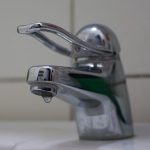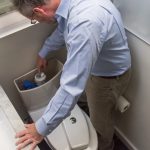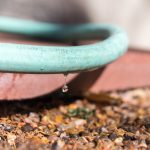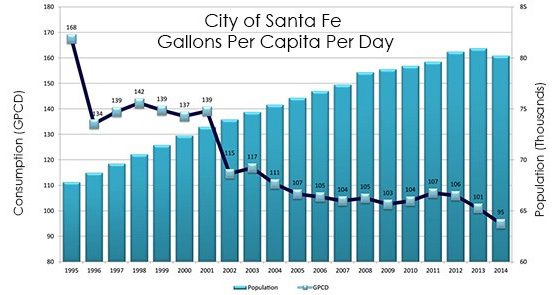Saving water is always in season. Re-thinking the way we use water, indoors and outdoors, will stretch our scarce water supply for future generations. Many Santa Feans have already found ways to make using water wisely a part of their lifestyle.
High Desert Living
Conservation is not just something we do in the summer when demand is high and supplies are low. Water is a limited resource in high desert Santa Fe and our water supply is threatened by climate change and population growth. Conserving water is the most direct way to ensure it's available in the future and is much less expensive than buying new water sources and building the infrastructure to deliver it.
Roof-Reliant Landscaping
Rainwater Harvesting with Cistern Systems in New Mexico
Rebate Incentives
The city offers a host of rebates that encourage customers to save water. Indoor rebates are offered to replace older water fixtures with water efficient models. Outdoor rebates encourage customers to invest in water saving methods like in drip irrigation, gray water reuse, and rain water catchment.
Rebate items include toilets, clothes washers, irrigation equipment, cisterns and rain barrels, and gray water system. Visit our rebates page for more details.
Rebates for commercial customers also available.
 Every Drop Counts – Fix A Leak
Every Drop Counts – Fix A Leak
Ten percent of homes have leaks that waste 90 gallons or more per day. In Santa Fe, that’s more than 3,800 homes. In addition to toilet flappers, common sources of leaks include faucets and valves.
Correcting easy-to-fix water leaks can save homeowners and businesses more than 10 percent on their water bills. In most cases, fixture replacement parts don’t require a major investment and can be installed by do-it-yourselfers.
One of the best ways to catch leaks by using the EyeOnWater app which lets customers set up leak alerts.
Water Conservation staff is available to answer customer questions on how to fix leaks (505.955.4225)
You can also download the Office of the State Engineer’s Don’t Waste a Drop: Finding, Fixing and Preventing Indoor Water Leaks brochure.
 Toilet Leaks
Toilet Leaks
If your toilet is running constantly, you could be wasting 200 gallons of water or more every day. To test for leaks, add a few drops of food coloring or a dye tablet to the water in the tank and see if the coloring appears in the bowl with a few minutes.
If your toilet is leaking, the cause is most often an old, faulty toilet flapper. Over time, this inexpensive rubber part decays or minerals build up on it. It’s usually best to replace the whole rubber flapper—a relatively easy, inexpensive do-it-yourself project that pays for itself in no time.
 Outdoor Leaks
Outdoor Leaks
- Check your irrigation system each spring before use to make sure it was not damaged by frost or freezing.
- Check your garden hose for leaks at its connection to the spigot. If it leaks while you run your hose, replace the nylon or rubber hose washer and ensure a tight connection to the spigot using pipe tape and a wrench.
- Check for hidden water leaks in your home. To check, turn off all indoor and outdoor faucets and water-using appliances, then watch the meter. If it continues to run or turn, you probably have a leak.
The Facts on Leaks
- A leaky faucet that drips at the rate of one drip per second can waste more than 3,000 gallons per year.
- A showerhead leaking at 10 drips per minute wastes more than 500 gallons per year. That’s enough water to wash 60 loads of dishes in your dishwasher.
- Most leaky showerheads can be fixed by ensuring a tight connection using pipe tape and a wrench.

